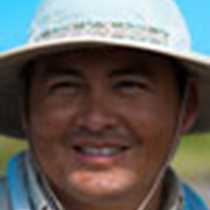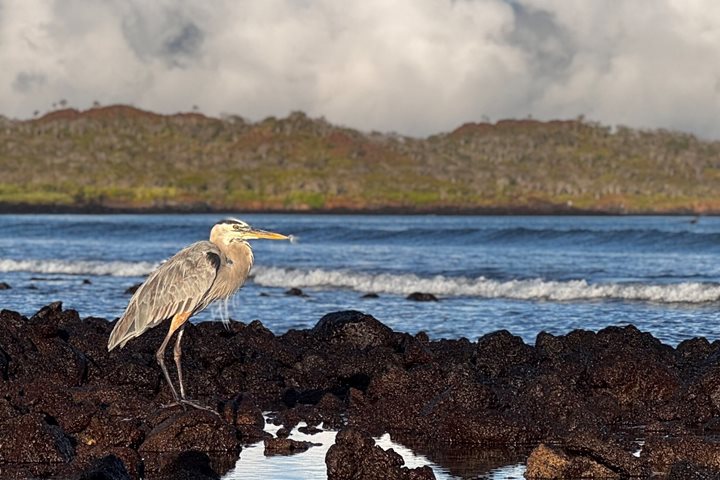After spending two full days in the western realm of the archipelago, the National Geographic Endeavour left behind the towering volcanoes and headed to the central region of the Galapagos. In the morning, we dropped anchor at Santiago Island, which is one of the islands that buccaneers and pirates used as a refuge back in the 17th century.
The morning outing took place at Espumilla beach. The low tide allowed us the opportunity to take a pleasant walk along this golden sandy beach. Ghost craps were very busy vacuuming up the microscopic organic detritus from the beach. While some of us spent time on the beach improving our photography skills, others opted to go for a more invigorating walk to the interior of the island. Both places were rich with wildlife unique to the Galapagos, and our eager explorers sighted finches, warblers and mockingbirds.
Later in the morning, our expedition leader Carlos Romero offered activities of a more aquatic nature, including kayaking, snorkeling and glass-bottom boating. We were keen to explore the underwater realm, and there was more than enough activity to enchant us, with eagle rays, playful sea lions, white-tipped sharks and an abundance of different varieties of fish. Kayaking along Buccaneer Cove delighted us with incredible views of the volcanic landscape. Geological formations made out of basalt, cinder and tuff have been shaped by the wind and water over the last 1.5 million years., creating colossal cliffs with crevices and shelves, which are used by sea birds for resting as well as nesting. Boobies and noddies were the main attraction on this stimulating outing.
In the afternoon, the National Geographic Endeavour was relocated to the northwestern corner of Santiago Island, where we visited one of the places where the naturalist Charles Darwin spend some of his days in 1835. Puerto Egas is rich in history, and was inhabited by Ecuadorians before the island became a national park in 1959. The shoreline is made out of basalt and tuff, providing a great place for tidal pools to form. Galapagos fur seals and migratory birds often congregate here, and we observed marine iguanas grazing for algae and herons preying on anchovies in the intertidal zone. This wild encounter gave us the opportunity to understand the connections that make up this ecosystem, including every single organism. Today’s natural quest ended on a black sand beach, where our entire group came together to head back to our ship. Another successful day in paradise!!!







